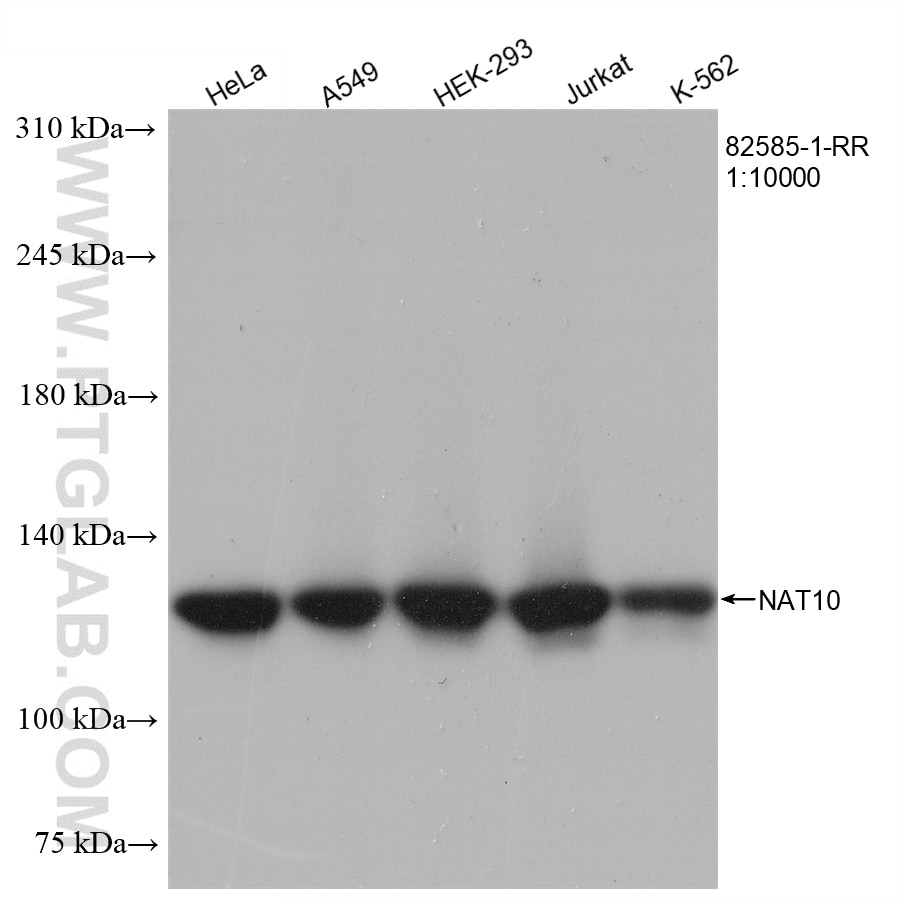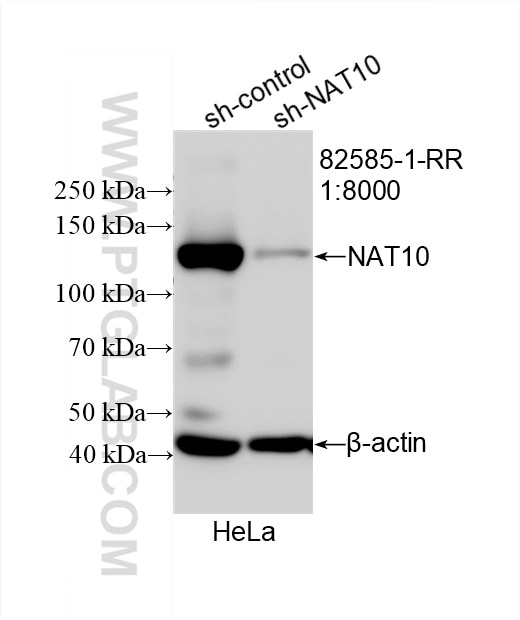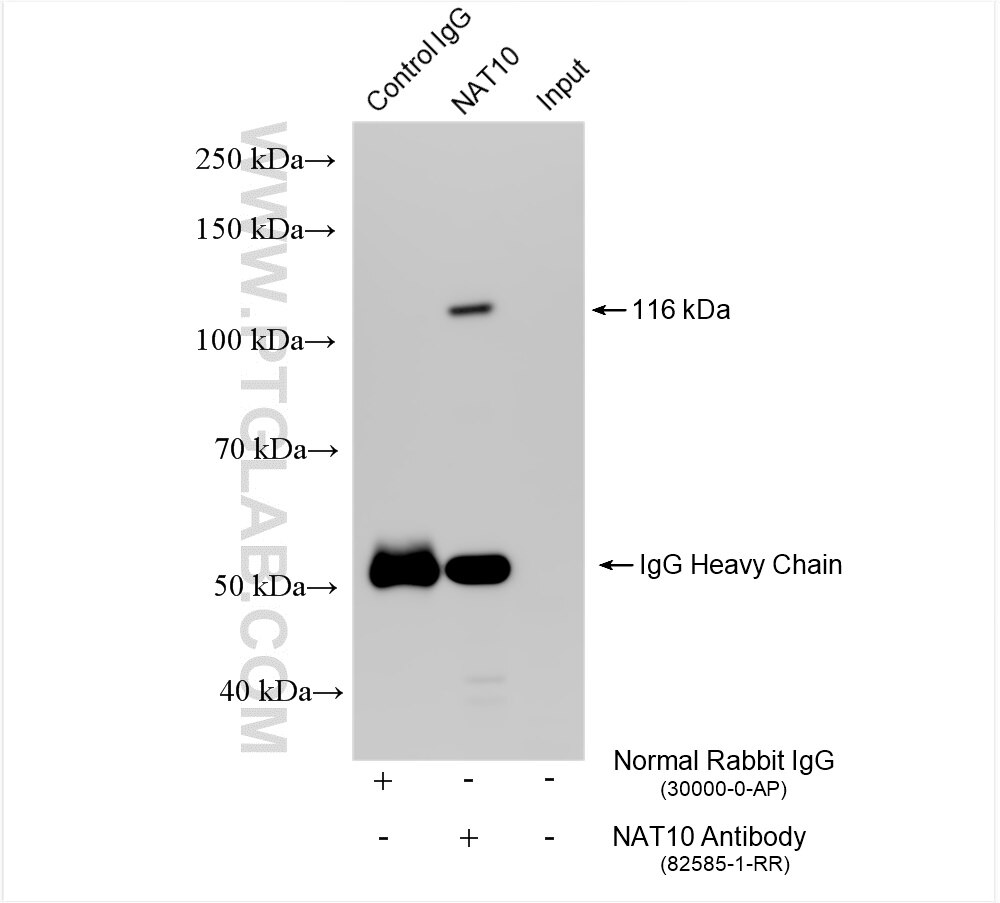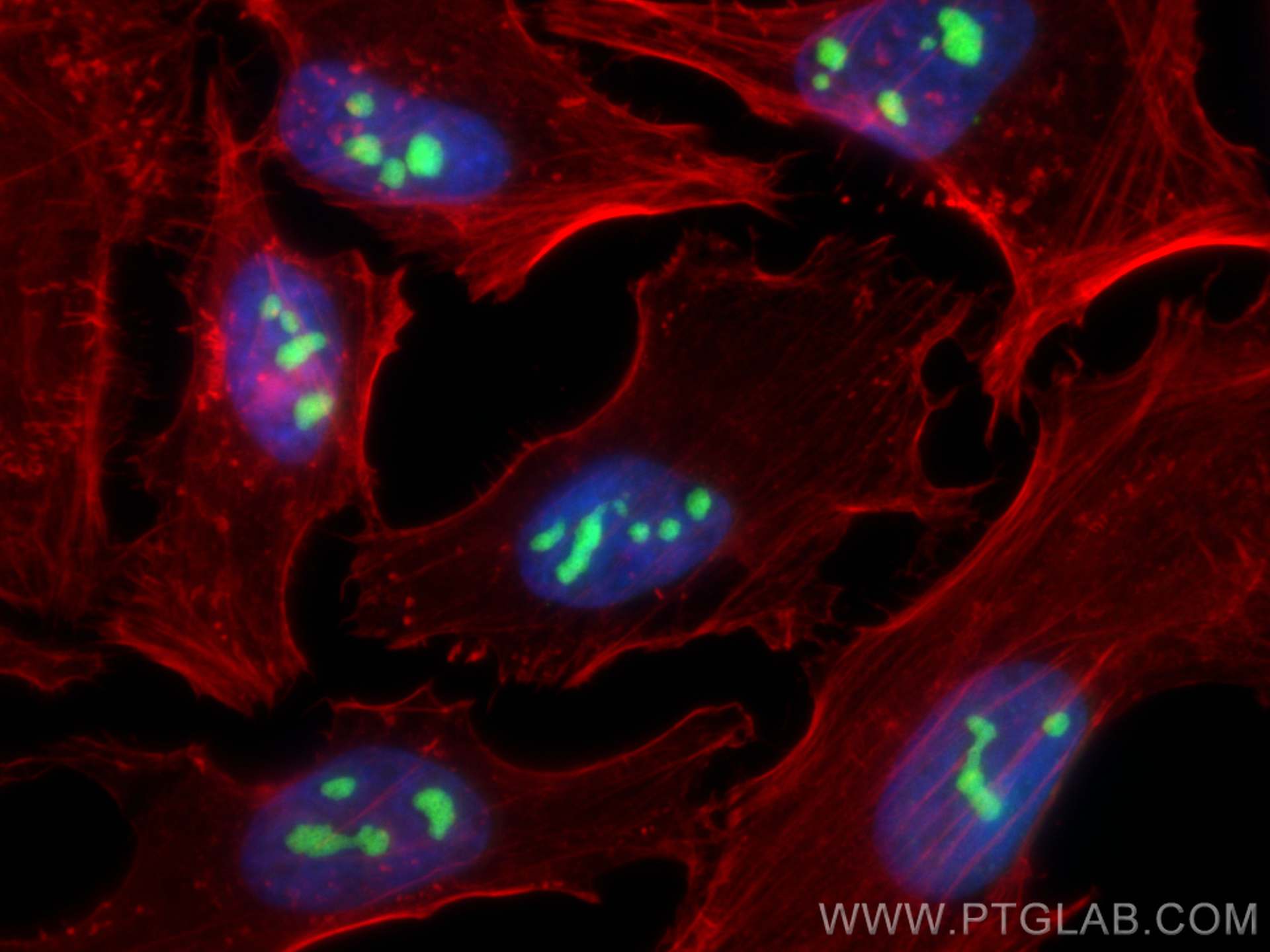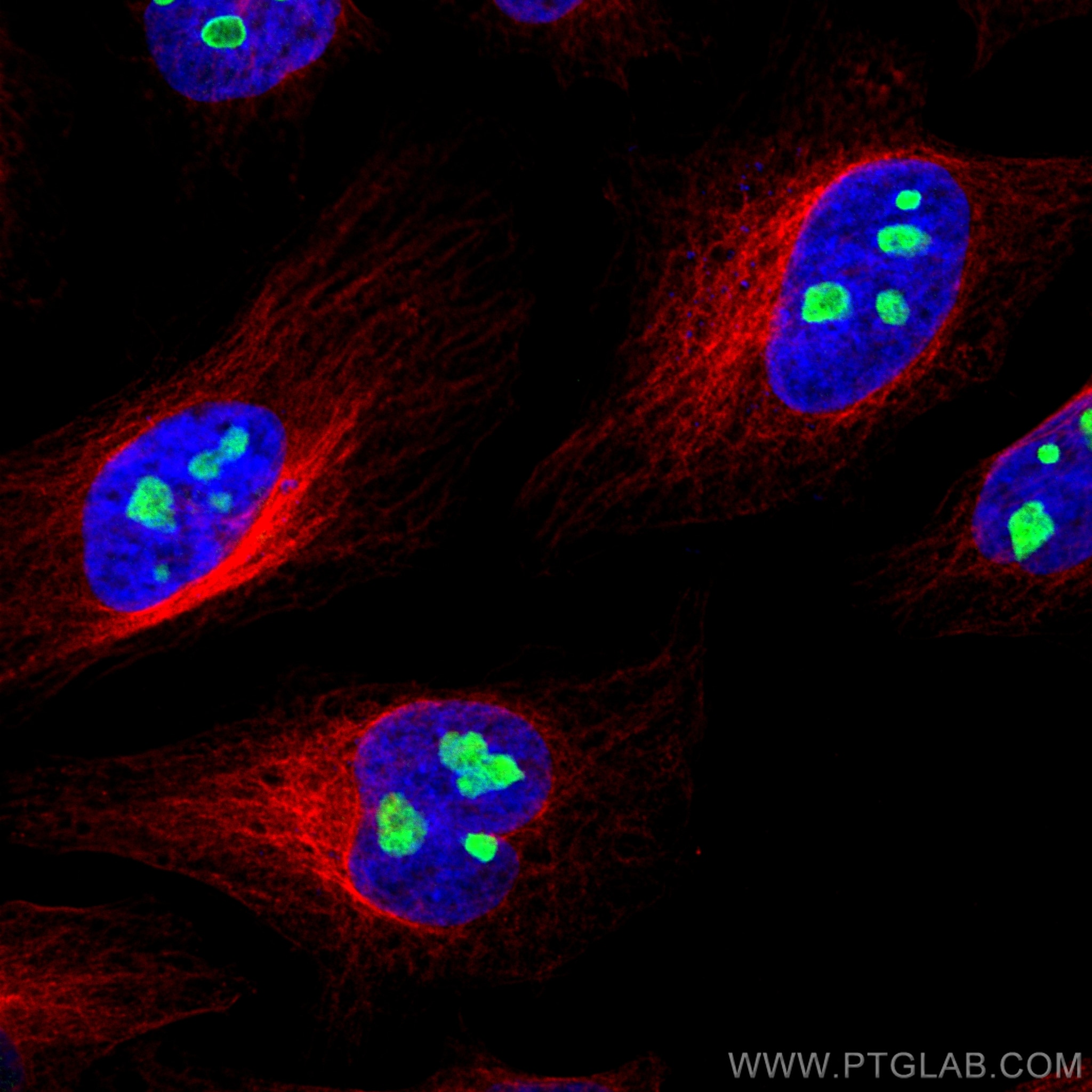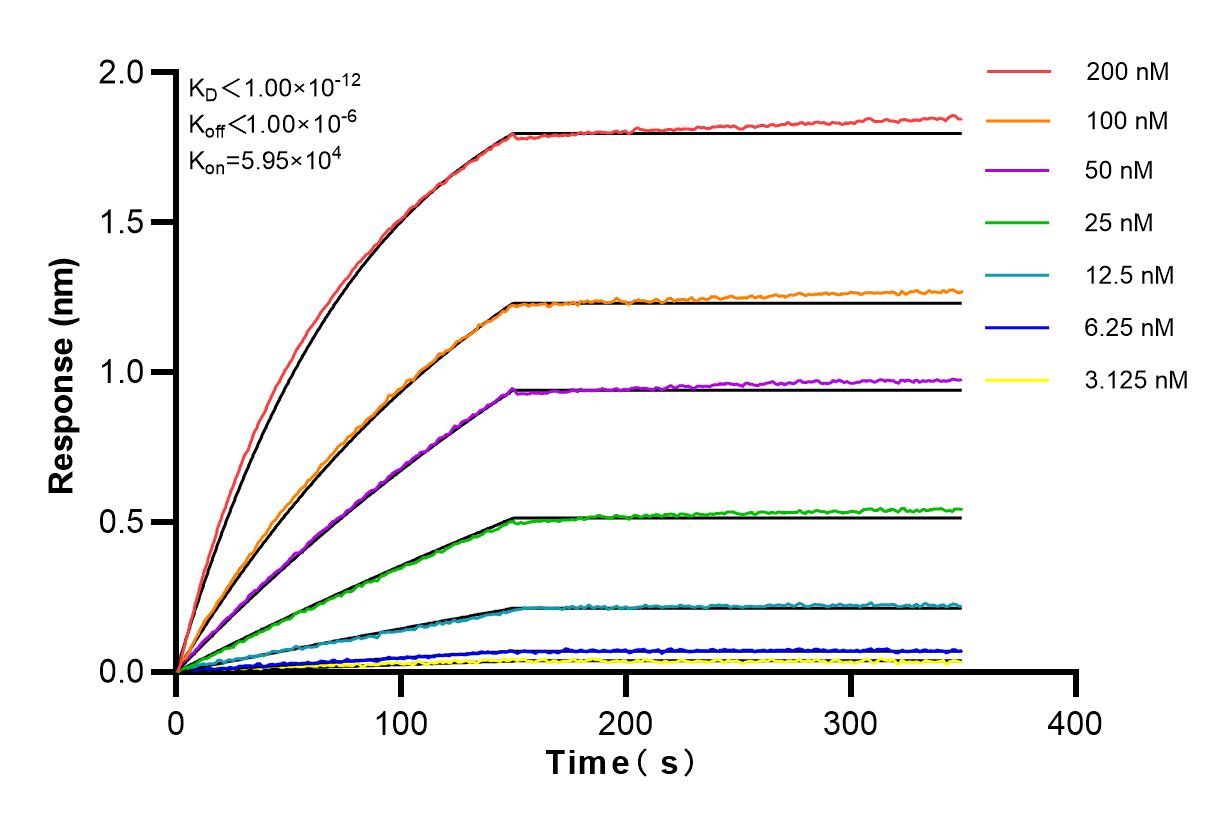- Phare
- Validé par KD/KO
Anticorps Recombinant de lapin anti-NAT10
NAT10 Recombinant Antibody for WB, IF/ICC, IP, Indirect ELISA
Hôte / Isotype
Lapin / IgG
Réactivité testée
Humain
Applications
WB, IF/ICC, IP, Indirect ELISA
Conjugaison
Non conjugué
CloneNo.
5B9
N° de cat : 82585-1-PBS
Synonymes
Galerie de données de validation
Informations sur le produit
82585-1-PBS cible NAT10 dans les applications de WB, IF/ICC, IP, Indirect ELISA et montre une réactivité avec des échantillons Humain
| Réactivité | Humain |
| Hôte / Isotype | Lapin / IgG |
| Clonalité | Recombinant |
| Type | Anticorps |
| Immunogène | NAT10 Protéine recombinante Ag4184 |
| Nom complet | N-acetyltransferase 10 (GCN5-related) |
| Masse moléculaire calculée | 1025 aa, 116 kDa |
| Poids moléculaire observé | 116 kDa |
| Numéro d’acquisition GenBank | BC035558 |
| Symbole du gène | NAT10 |
| Identification du gène (NCBI) | 55226 |
| Conjugaison | Non conjugué |
| Forme | Liquide |
| Méthode de purification | Purification par protéine A |
| Tampon de stockage | PBS only |
| Conditions de stockage | Store at -80°C. 20ul contiennent 0,1% de BSA. |
Informations générales
NAT10 (N-acetyltransferase 10) is a nucleolar protein that is involved in regulation of telomerase activity, DNA damage response, and cytokinesis. It also plays a role in maintaining nuclear shape. Inhibition of NAT10 has been reported to rescue the misshapen nuclei in laminopathic cells via microtubule reorganization. The specificity of this antibody has been tested by siRNA (PMID: 24786082). NAT10 regulates mitotic cell fate by acetylating Eg5. NAT10 depletion results in multinuclear giant cells, which is the hallmark of mitotic catastrophe (PMID: 35210604). NAT10 plays a crucial role in carcinogenesis through influencing EMT, hypoxia, ribosomal biogenesis and overall, promoting translational efficiency. Recently, we reported that treating cancer cells with Remodelin, a small molecule inhibitor of NAT10, causes alteration in global lipid metabolism (PMID: 36149760).
